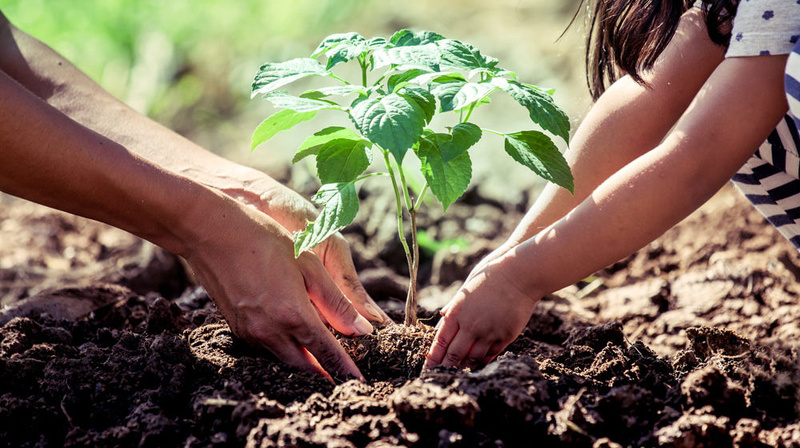
Landscaping with Kids, Part Two
Teaching your kids about landscaping increases their self-confidence and allows them to feel that they’re contributing to a project. Adopt a teacher’s heart and develop a shared vocabulary to make landscaping a fun, learning experience for your son or daughter.
Children love the outdoors. The smells, sounds, and textures surrounding them are entirely different from the sterile classroom or spotless department store. Involving kids in a landscaping project is a simple way to spend quality time together while giving them a new experience in the great outdoors.
Learning something new increases children’s self-confidence and applying the knowledge to a project with you helps them feel that they’ve contributed. In this post, we talk about passing on landscaping know-how to your kids.
Adopting a Teacher’s Heart
Part of landscaping success is having basic knowledge about plant care. Maybe your green thumb comes naturally—you seem to “just know” what thirsty leaves look like or when it’s time for some trimming. Maybe you had to learn from YouTube, library books, or a friend.
Either way, knowledge is necessary. And depending on your children’s ages and interests, they may have little to none of it.
A critical first step to teaching your son or daughter about landscaping is adopting the heart of a teacher. This doesn’t mean you need a Ph.D. in horticulture or that you are versed in all the Latin names of plants. No, it means that you take note of your child’s interests. It means that you are curious about their minds, asking them questions and answering theirs.
Your children’s minds are hard-wired to be explored, so just fielding their questions as you work together may be more than sufficient!
Develop a Shared Vocabulary
A simple way to start teaching landscaping skills is by covering basic terminology of tools and plants. Besides being more efficient (always a win when working with kids!), using the right words gives them more awareness and control of their surroundings.
For example, consider asking your daughter to “grab the trowel” from the garage, versus “small tool with a handle that looks like a little shovel.”
Or tell your son to get the gloves you left by the crape myrtle (not, “the little tree over there by the porch).”
A shared technical vocabulary is empowering for parents and children. It allows kids to be active participants in a part of your world they were not aware of before.
Basic Approaches
Train your child to implement a few standard procedures before or after working outside on a landscaping task. In cooking, you teach your children to read the whole recipe before mixing ingredients and to clean up the kitchen after the cookies are baked. When it comes to landscaping, what things do you do before or after every project? Make a short list and share it with your child. Because it’s not specific to one project, it will get reinforced each time you go out to work.
Here are a few ideas:
- Check the weather before setting aside a block of time to work outside
- Make sure you have all the tools, plants, and materials you need before breaking ground
- When using equipment, begin by conducting a visual inspection and checking gas and oil
- Rinse or wipe down tools when finished (as necessary), then put everything back where it belongs
Fundamentals such as the ones above increase productivity, reduce frustration and waste, and become healthy habits over time that your child will carry into adulthood.